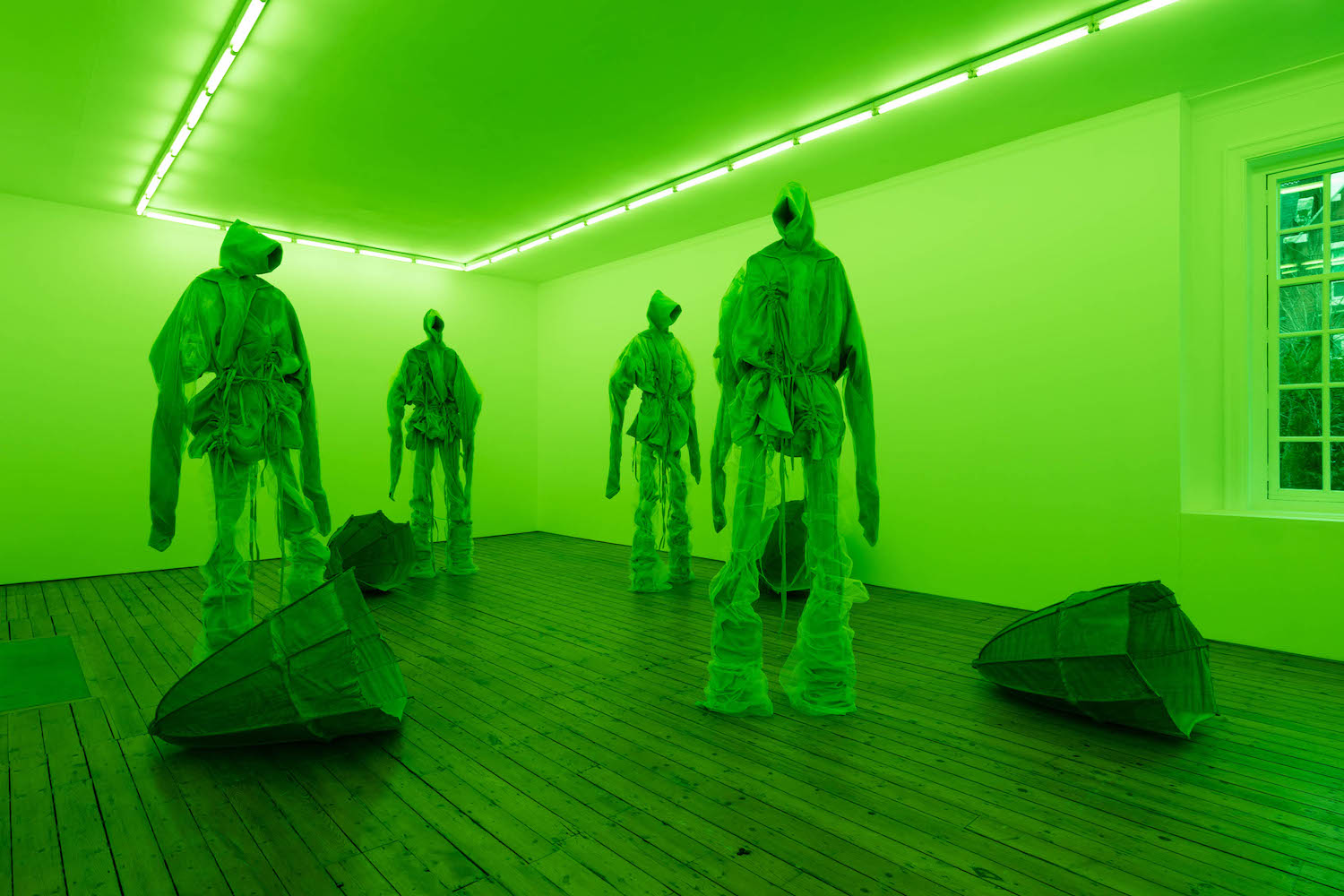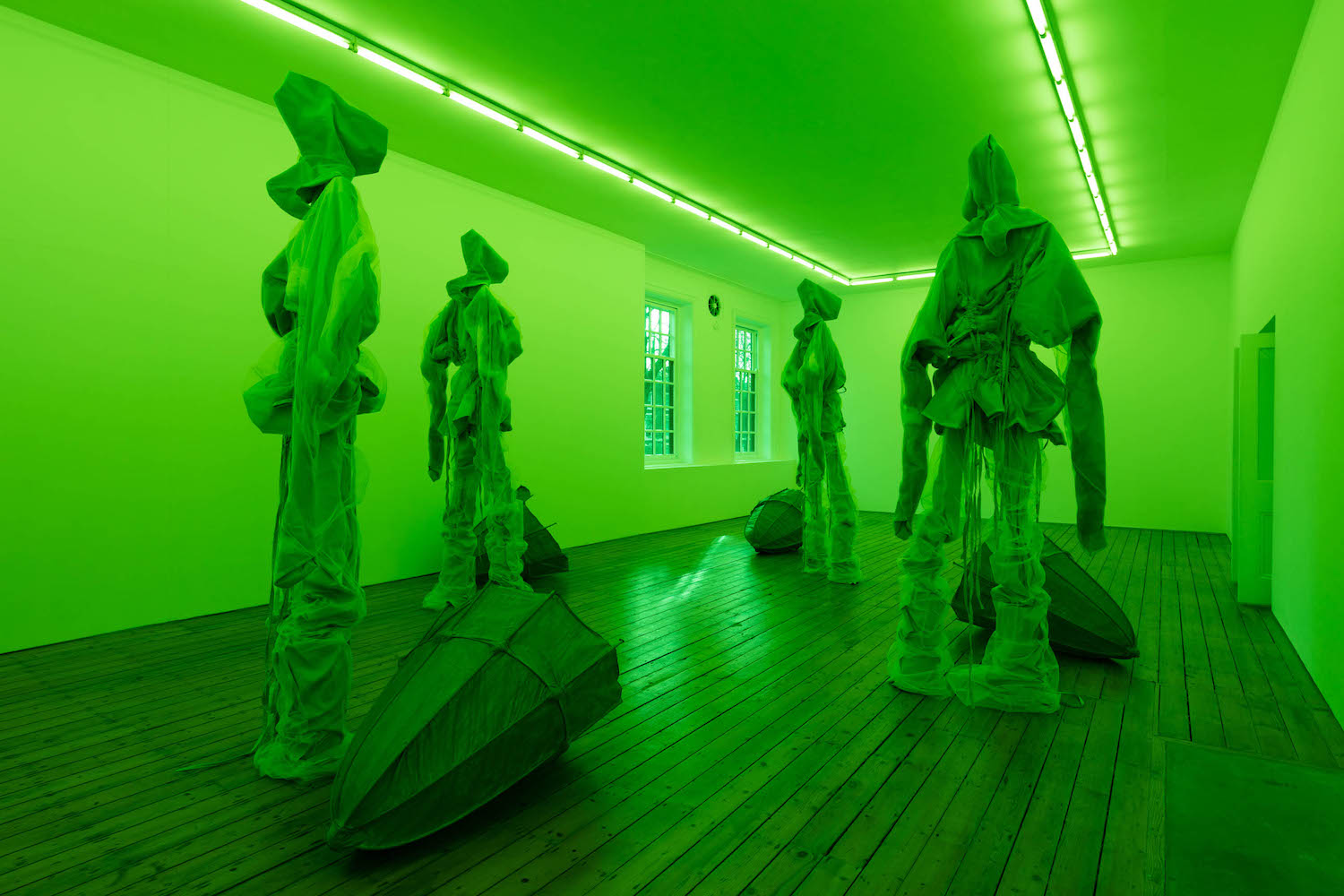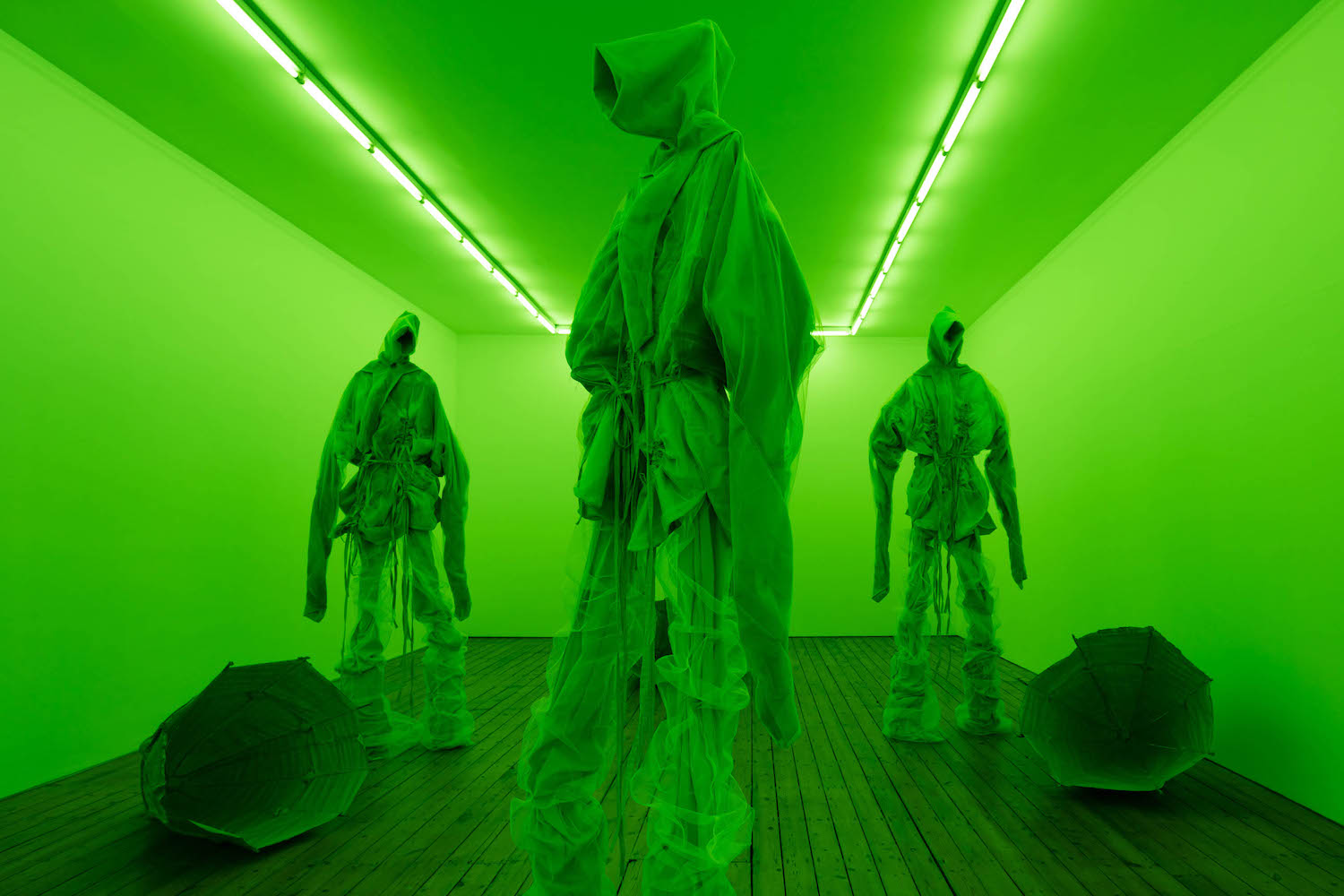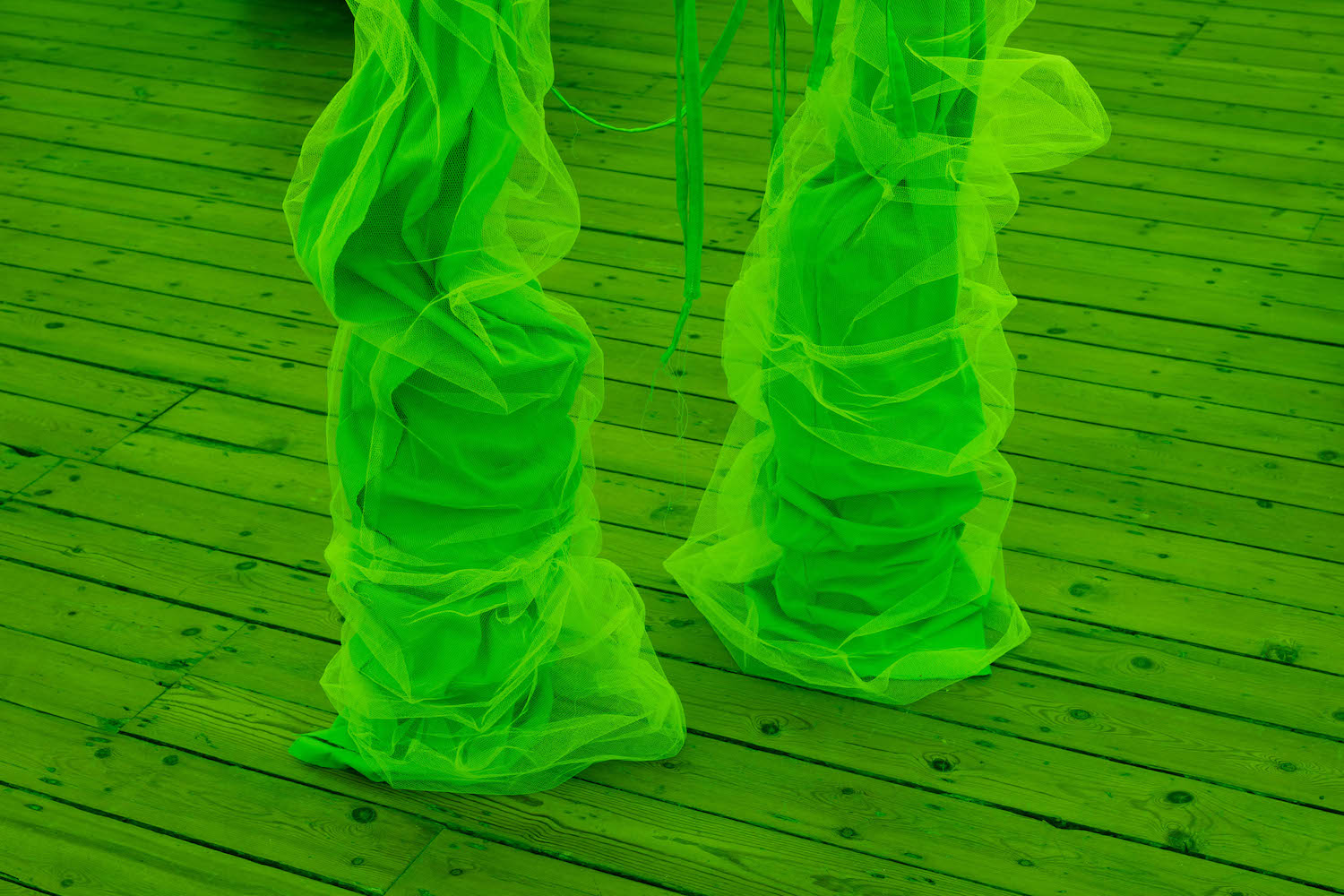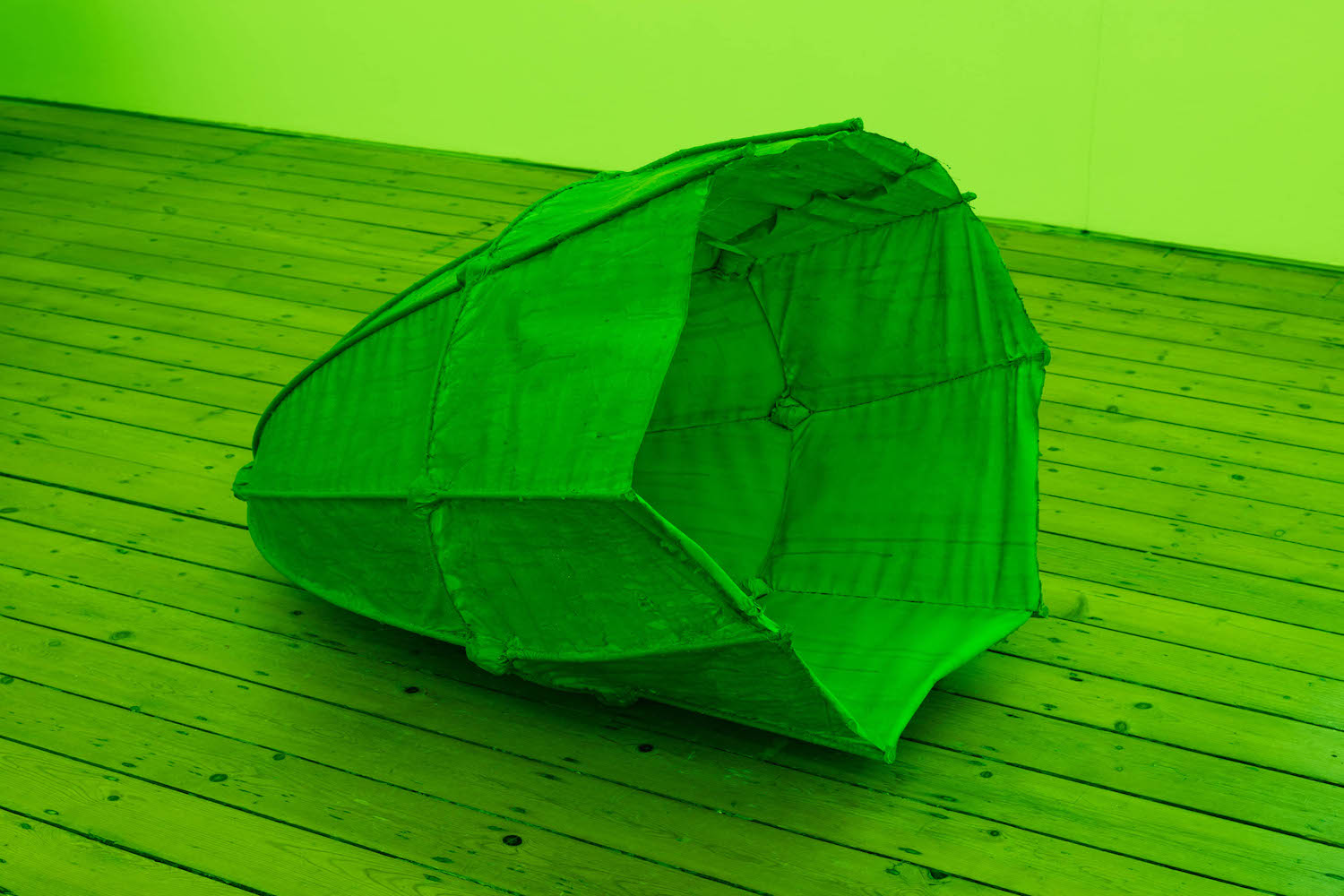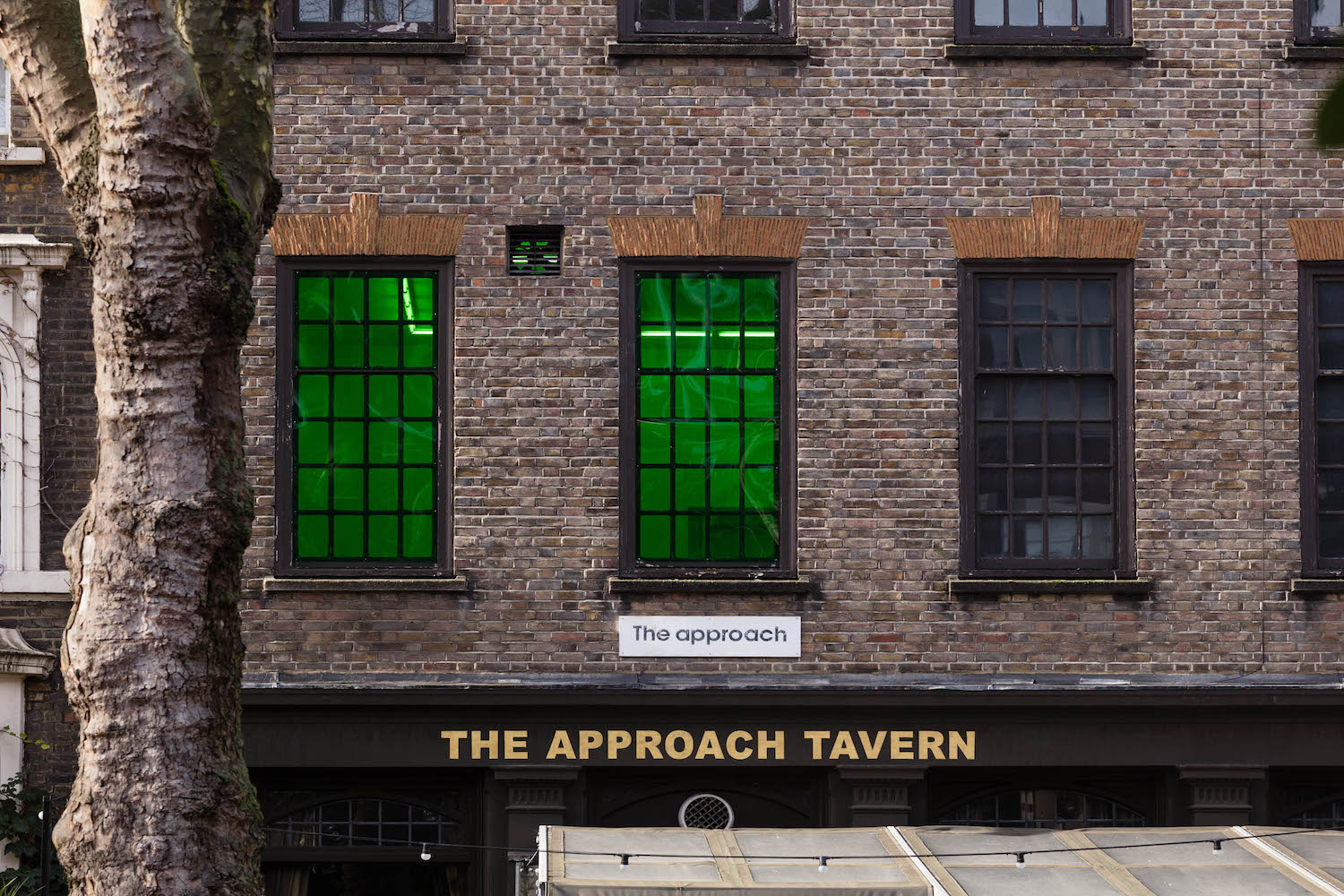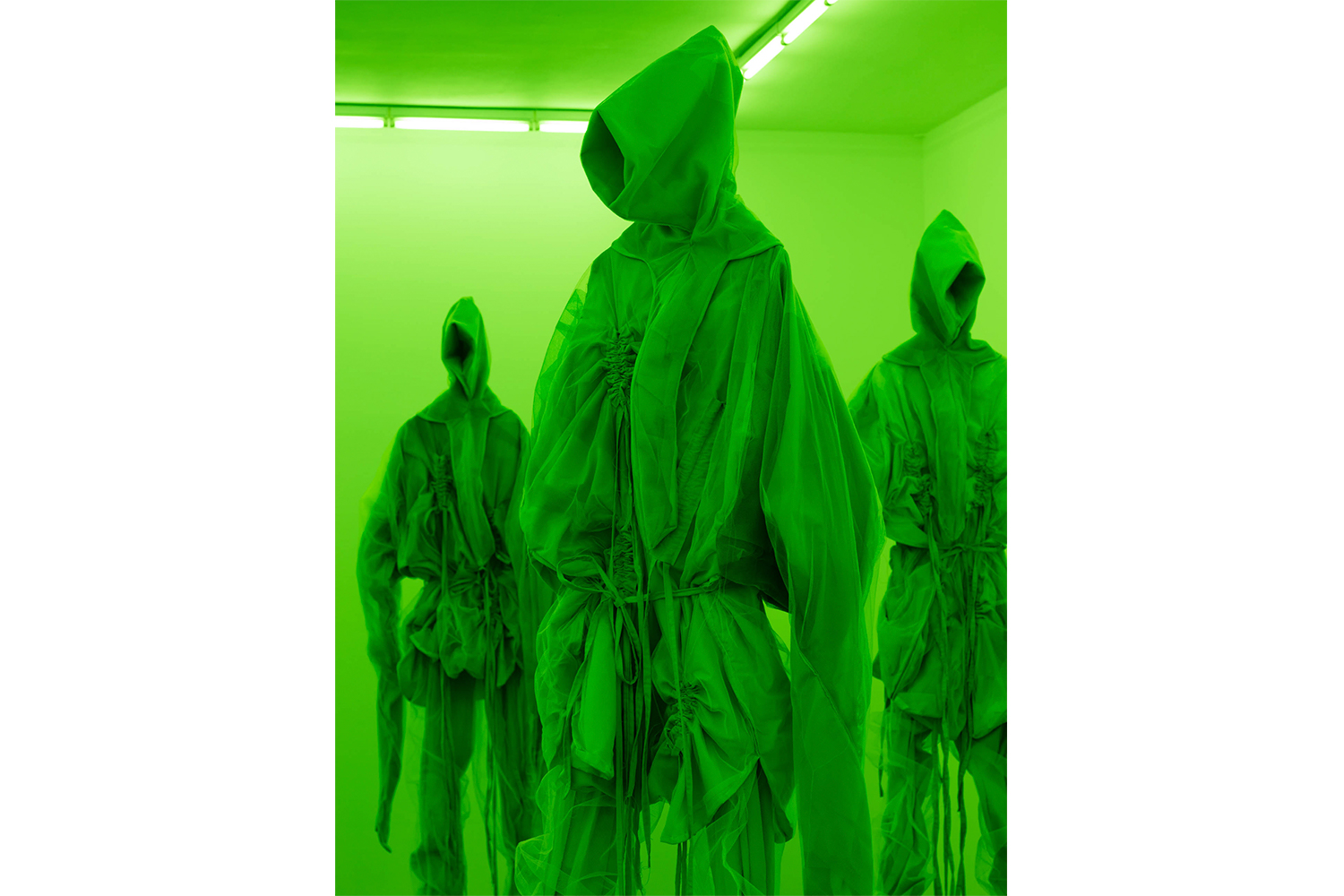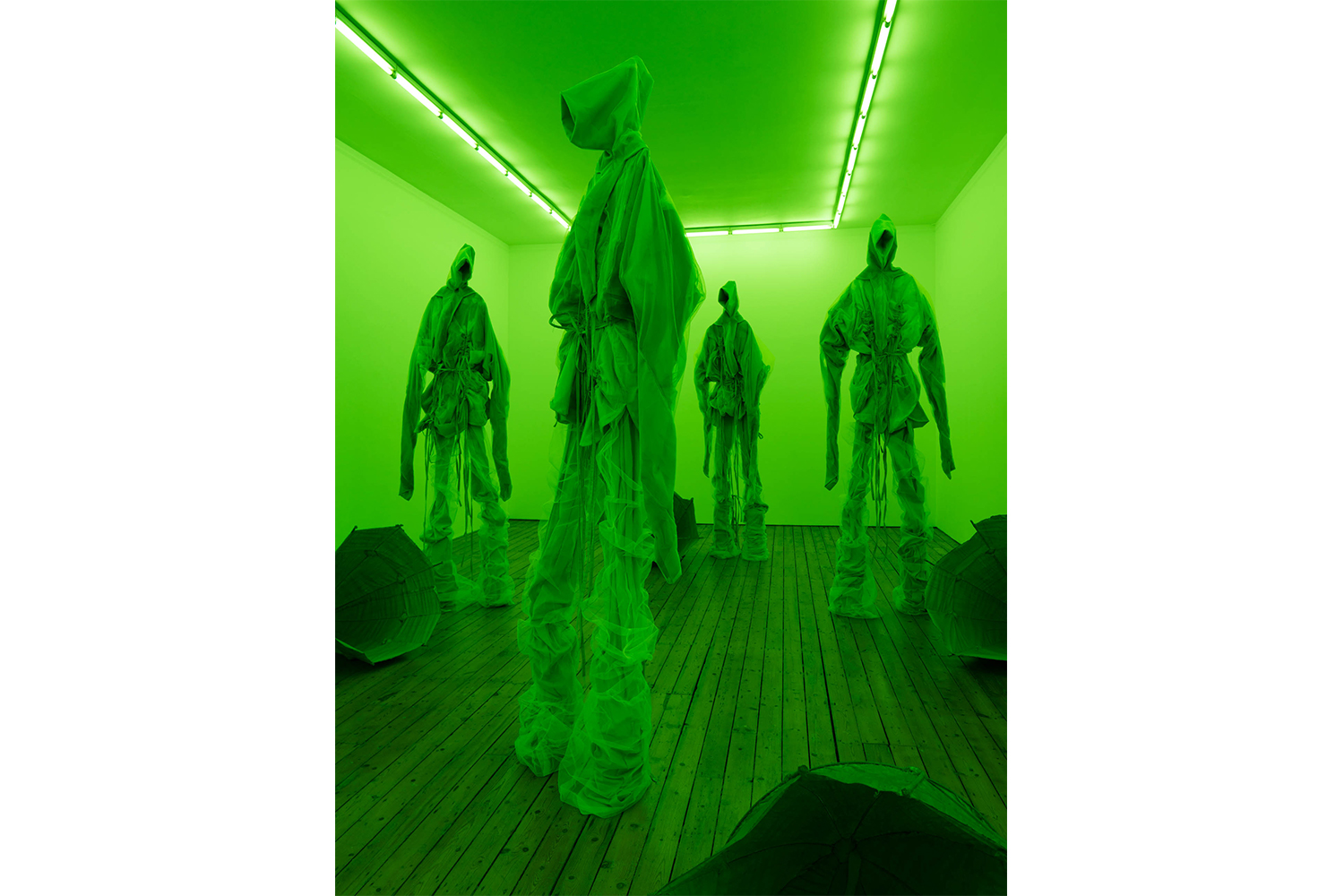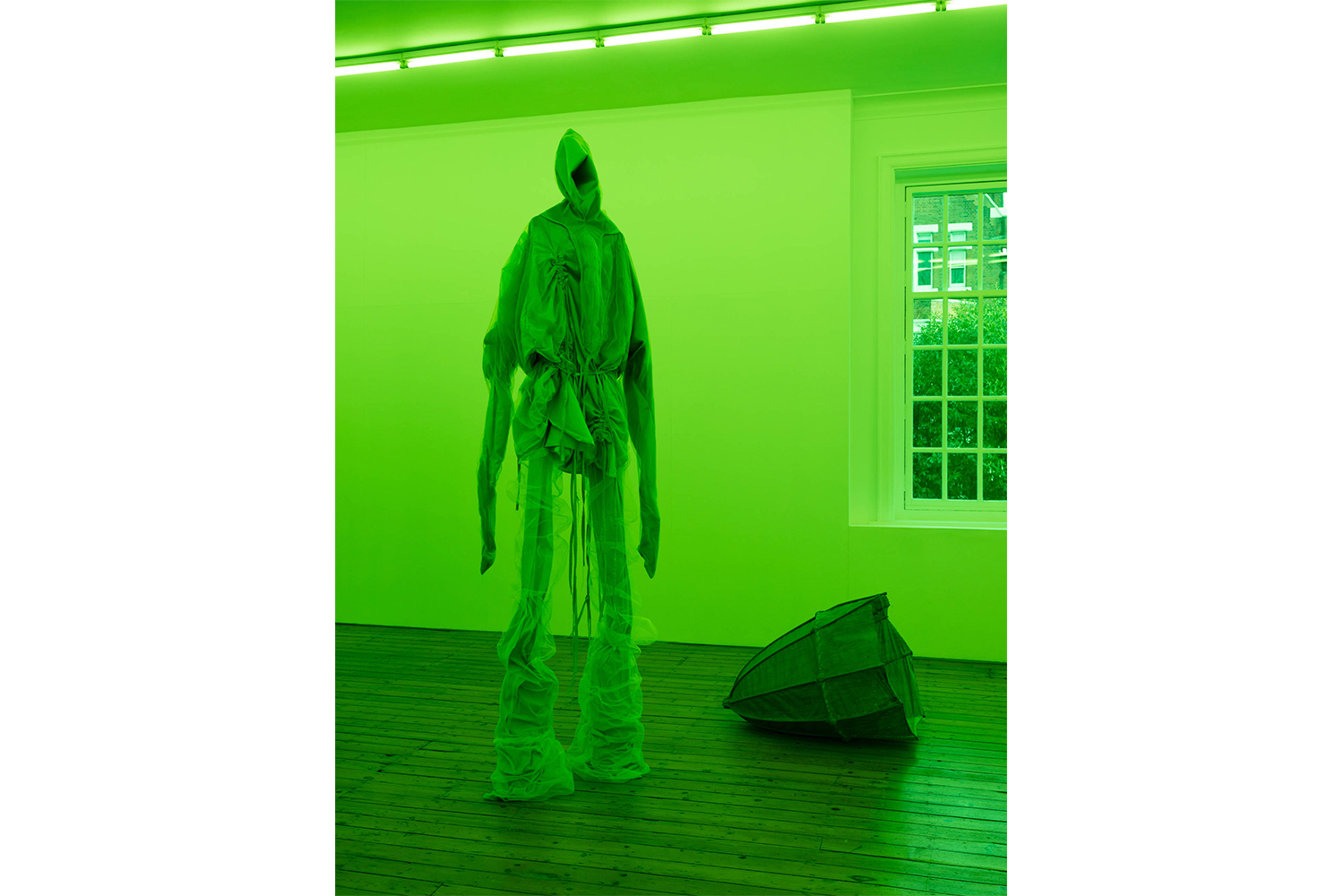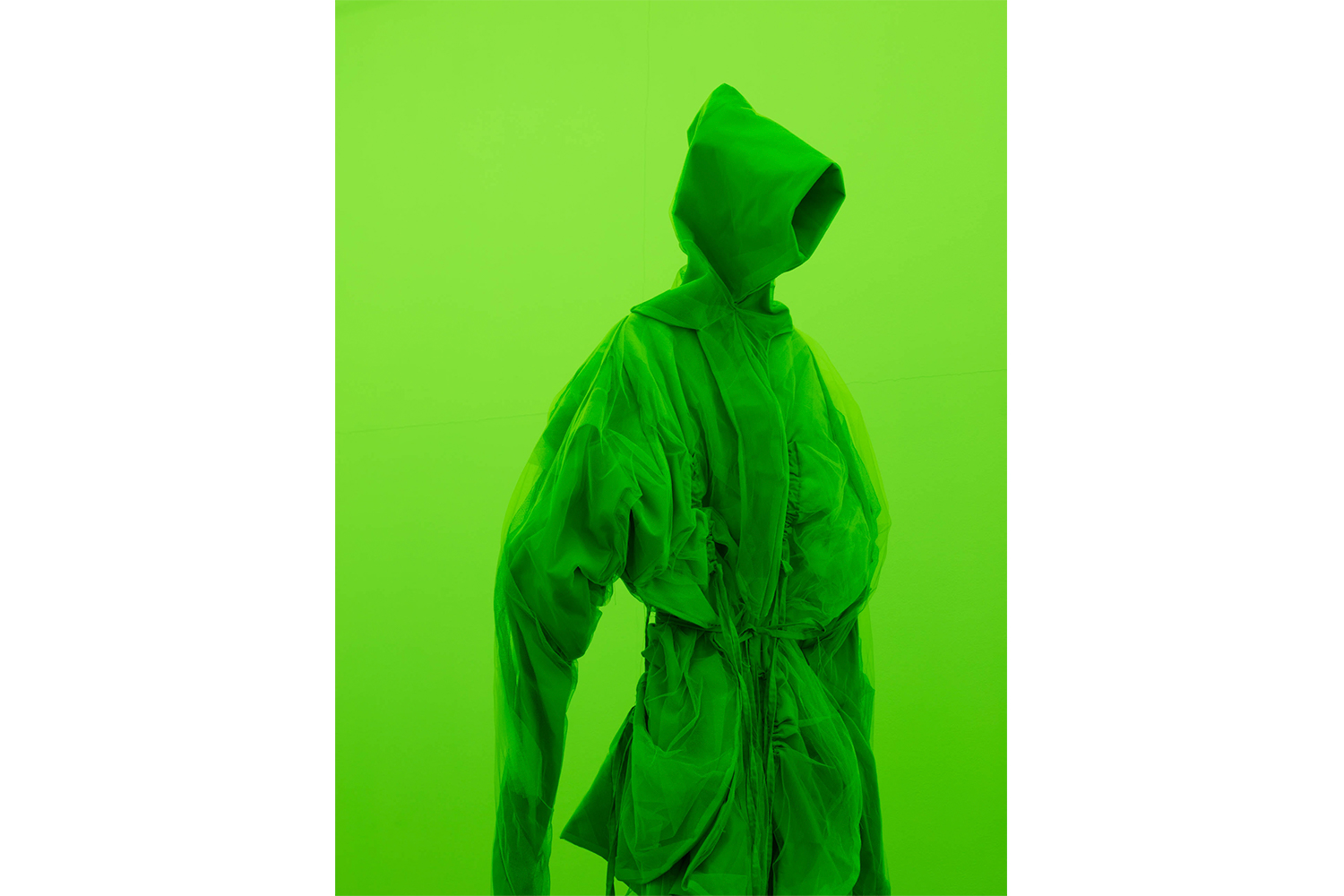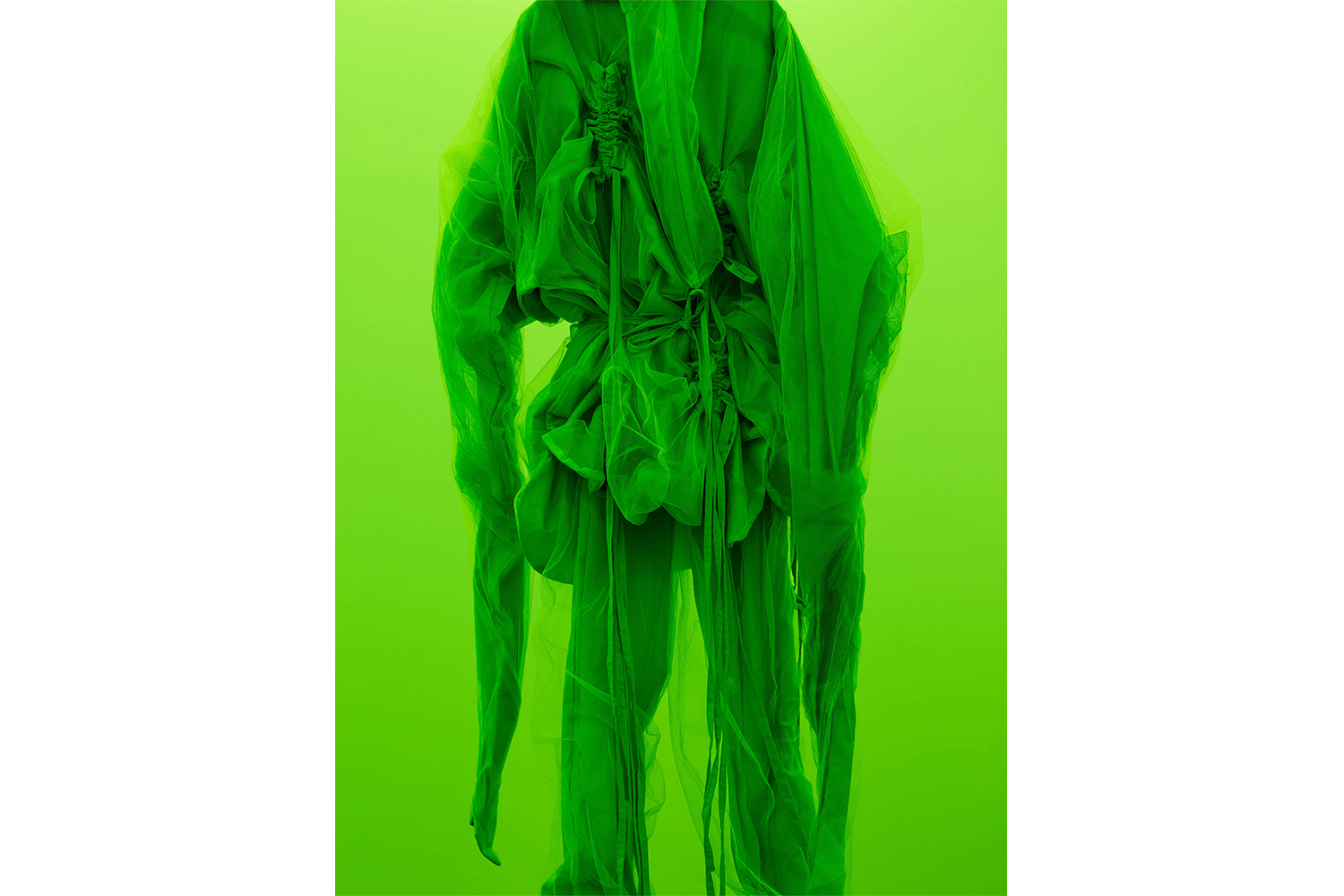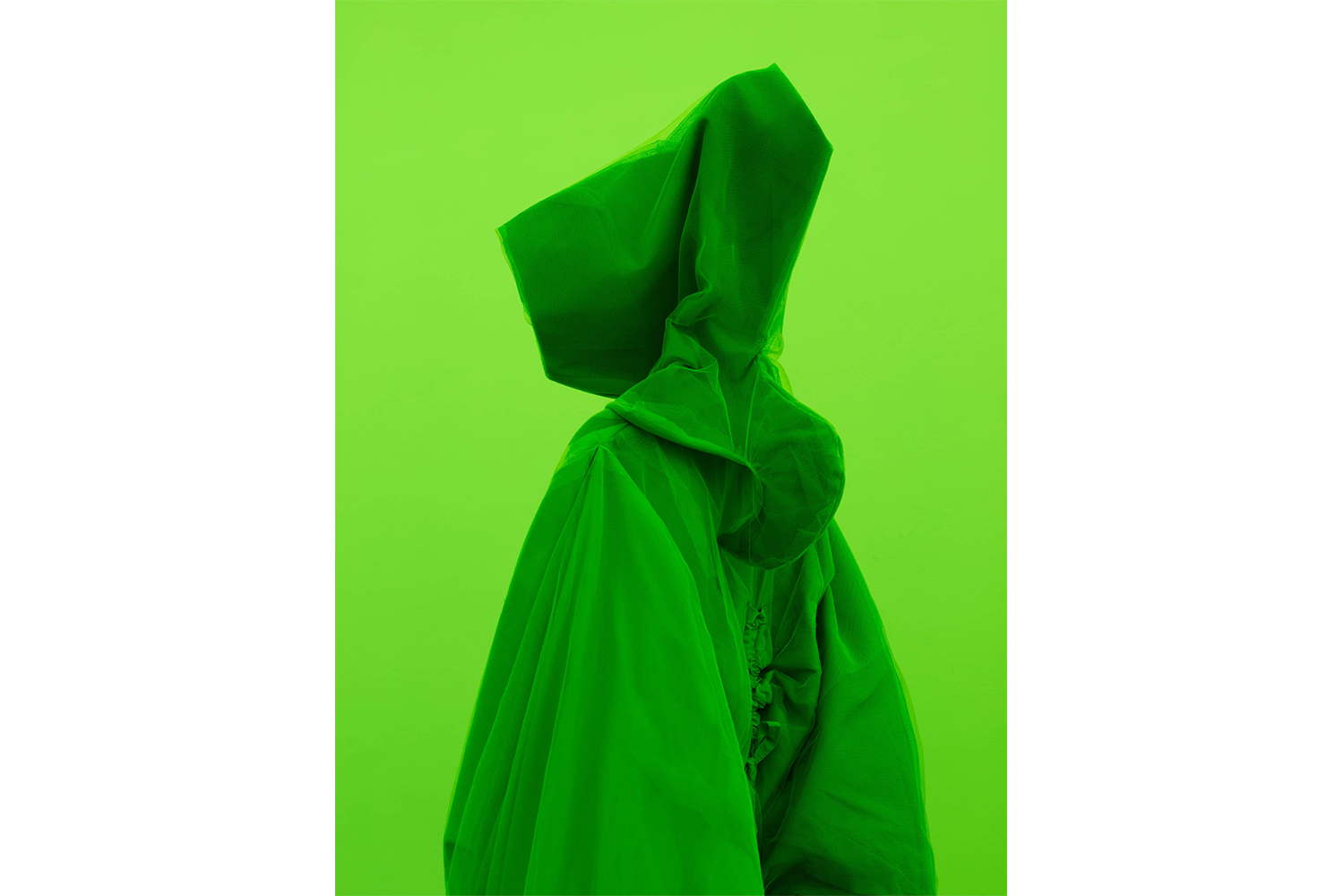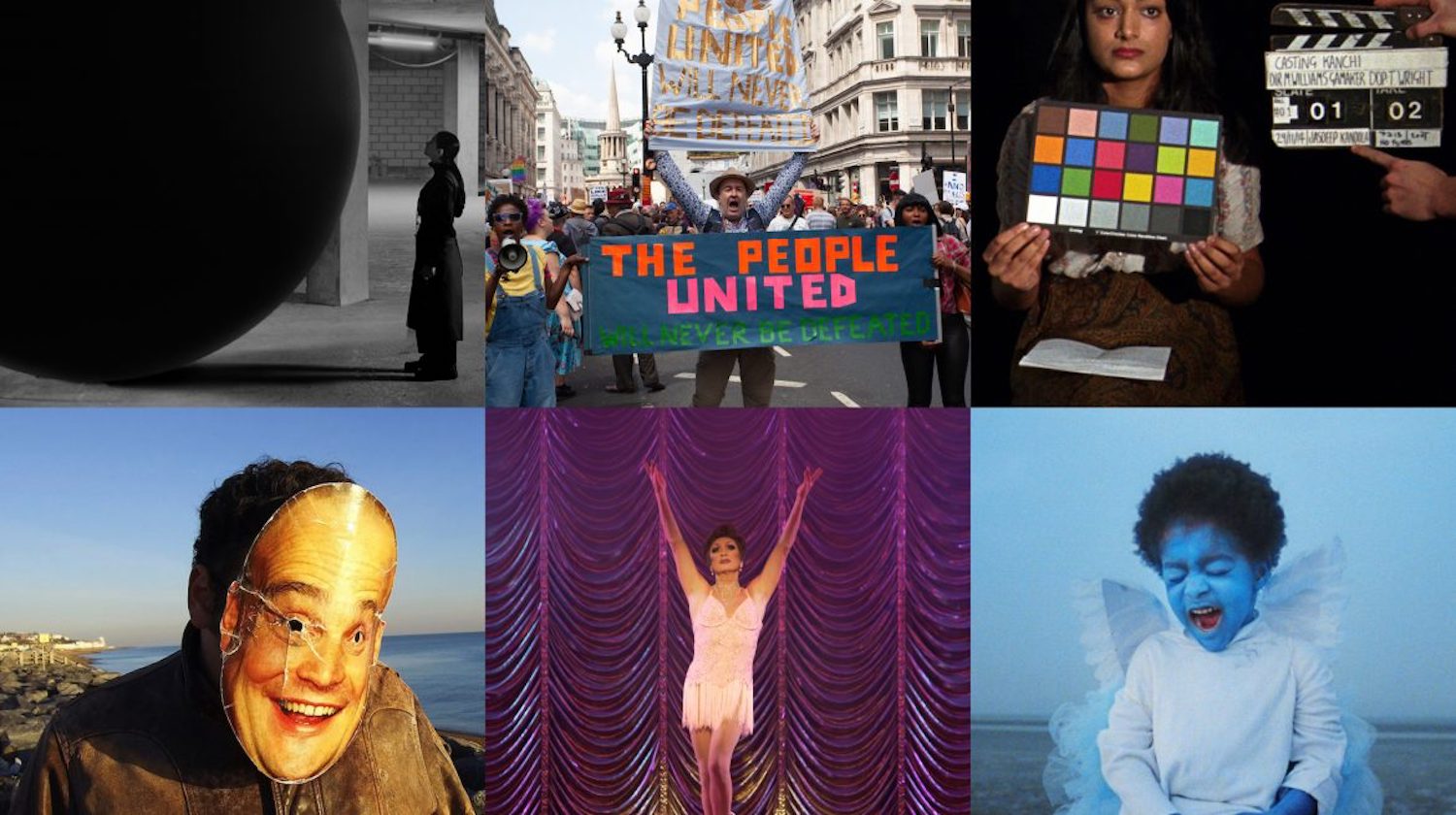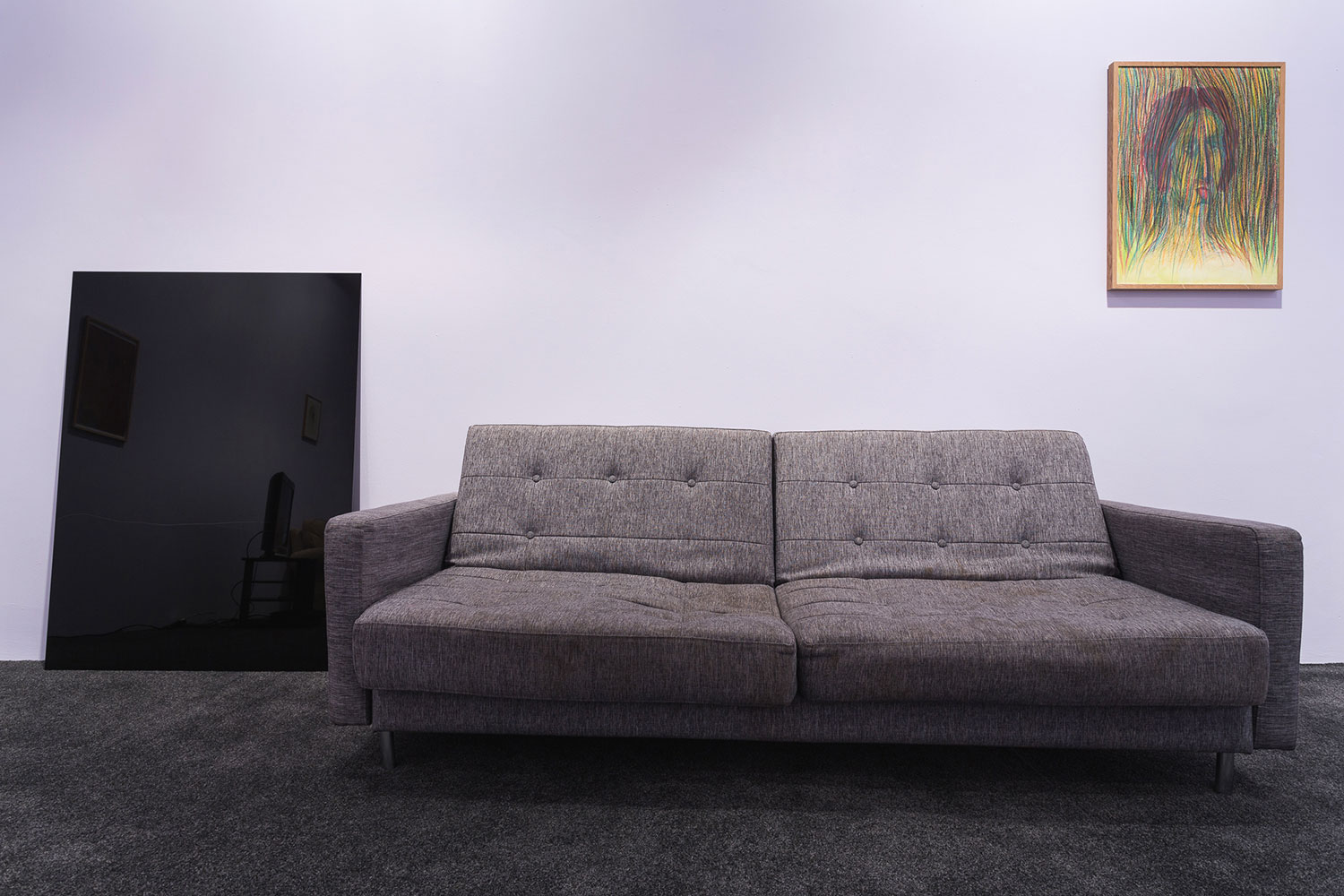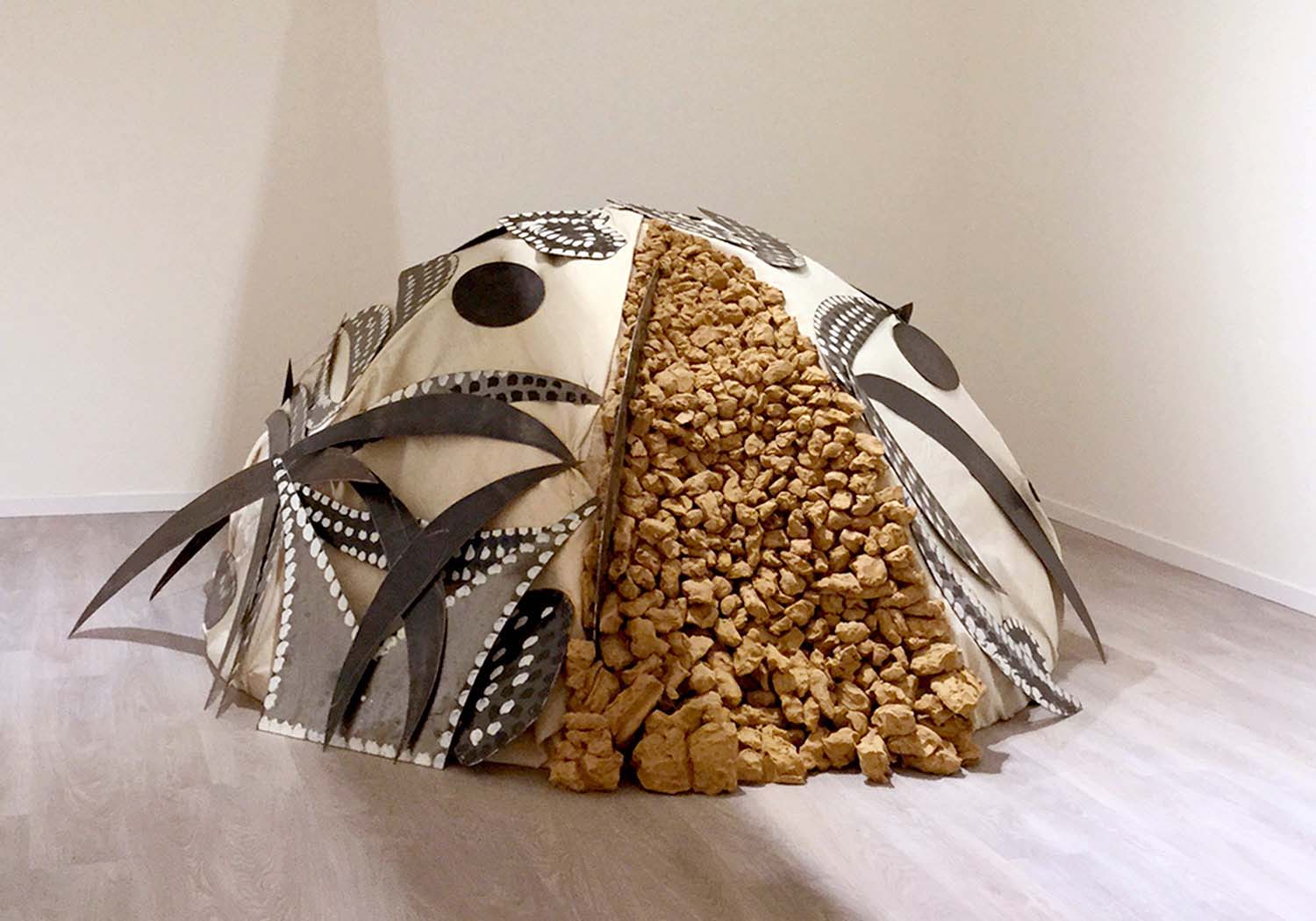The semiotics of the color green are not always immediately understandable. For all its cross-cultural signifiers — as a marker of the good: safety, youth, verdancy, permission, and calm; and of the bad: envy, the serpent at Eden, nausea, poison, and bile — green, when invoked under unfamiliar emotional or spatial circumstances, can also elicit singular in-betweens. Beyond her use of green screen compositing as a tool of appropriation, the Oslo- and Berlin-based artist and musician Sandra Mujinga allows the color itself to stir thoughts of otherness and extraterrestrial possibility within her work, in turn citing her interest in tethering what is formally known in the natural world with that which can only be conjectured upon. Intrigued by the possibility of embedding critiques of real-life injustices, such as “the violence of representation,” within her speculatory worlds, in “Spectral Keepers,” her installation at The Approach Gallery, London, Mujinga baths the high-ceilinged exhibition space in a wash of radiant green, using the color as a proxy through which to imagine the opaque Black.1
“We clamor for the right to opacity for everyone,” writes Édouard Glissant at the end of his seminal essay Poetics of Relation, in which he clarifies that “the opaque is not the obscure” but “that which cannot be reduced.”2 Glissant’s theory on the potential for radical, diasporal opacity to subvert the reductive colonial gaze finds form in Mujinga’s demonstration of worldbuilding as a strategy of survival. Grouping four towering, anthropomorphic “Keepers” — the latest iterations of figures previously installed at solo and group presentations at Vleeshal, Middelburg, Bergen Kunsthall, and Kunstverein Hannover — toward one end of the exhibition space, Mujinga constructs a model of codependency and care between animate beings, further indicated by the cephalopod-shaped baskets in their possession. Each of the lithe, hooded creatures are identical, save for slight gestural discrepancies. More importantly, they are faceless — opaque — and thus unintelligible to the human gaze.
The compositional elements of “Spectral Keepers” — the figures and the light — are formed as such to induce the effect of an impermeable other. The beings’ uncanniness is caused by their untranslatability, and vice versa. It is unclear whether one should think of them as disembodied textile sculptures or embodied costumes. Looming and hyperbolically proportioned, the fabric vessels first appear to be domineering, but then, as one looks closer at their translucent skins of ruched green cotton and tulle, it becomes clear that their imposition lies within their ability to merely affect the veneer of fullness through non-transparency.
This device recurs via the flooding of the room with fluorescent, chartreuse light. The figures are drenched in a green that shines boldly through the uncovered windows and seeps under the door like slime. Mujinga, with her predilection for this colour as a formal signature, uses the light to establish a discernible atmosphere inhabited by her sentinel-like creatures. The preternatural, sticky hue usurps all lifelikeness from that which enters its scope (including daylight), causing an abject sensation to crawl over viewers as they attempt in vain to adjust their eyes to the conditions of this other world. It is difficult to measure the limits of the green haze; the sickly color coats all that it touches with a thick, artificial impasto, loath to fade, even in places where one might expect dark shadows to form.
The allegory of Mujinga’s installation cites the speculative literature of science-fiction stalwarts Octavia E. Butler and N. K. Jemisin, as well as the writings of Glissant, to demonstrate the potential for opacity as praxis. Sensory discomfort breeds in the viewer faced by the hyperreal, hypervisible Keepers for too long. In “Spectral Keepers,” Mujinga creates a system of self-subsisting refusal that feigns opacity through the expulsion of the voyeur.Eventually, one is moved to return to the “real” world.

